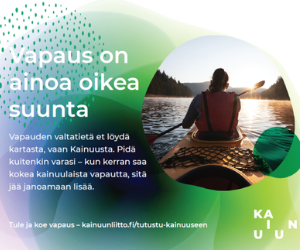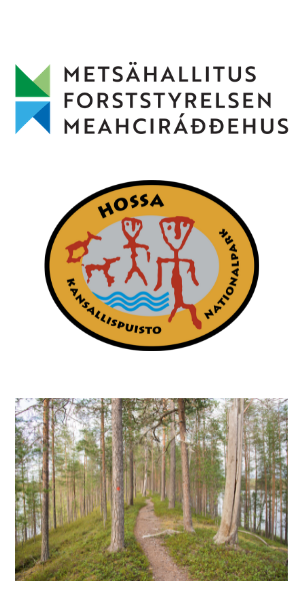The Right Trail Running Gear Has Your Back – No Matter the Weather
Published: 11.04.2025

Conditions at the start of a trail run may seem almost perfect – the sun is shining from a cloudless sky, and temperatures are a comfortable 30°C, with runners being greeted by hours of warm weather. Suddenly, the weather changes drastically! Dark clouds gather in the sky, and a violent downburst strikes the event area! The temperature drops by more than 20°C in a minute, and strong winds and rain hit the landscape!
Trail running in Finland’s beautiful wilderness areas and nature spots – but sometimes also in unpredictable weather conditions – requires careful preparation and the right gear. A concrete example of this was seen during the 2024 Kainuu Trail when a sudden downburst interrupted the event in Hossa.
Such unexpected natural phenomena further emphasize the importance of proper gear to ensure runner safety and a smooth running experience.

The Impact of Weather Conditions on Gear
The downburst experienced during the 2024 Kainuu Trail demonstrated how quickly conditions can change – and why every participant must have all mandatory gear with them, even if the weather at the start of the run feels perfect.
Event director Jukka Liuha describes the situation as follows:
“The downburst experienced at last year’s event clearly showed how important it is to carry the mandatory race gear defined by the event organizers. For example, last summer the temperature was as high as nearly 30°C! But when the downburst hit during the event, the temperature suddenly dropped by over 20°C. And on top of that, there was strong wind and heavy rain. A runner who didn’t have the mandatory gear like a thermal shirt, shell jacket, and space blanket could get very cold. Fallen trees caused by the downburst blocked the evacuation vehicles from reaching the evacuation points, and some runners had to wait for 3.5–4 hours before we were able to get to them. That’s a very long time without warm, protective clothing and without extra energy or food. Of course, we were able to provide additional snacks and drinks at some of the evacuation points (which were also race checkpoints), but in the worst spots, it’s possible that no extra energy or drinks were available.”
Liuha reminds us that the gear requirements aren’t set arbitrarily – each item plays an important role in supporting the runner’s safety and survival capability.

Mandatory and Recommended Gear
The Kainuu Trail event has defined both mandatory and recommended gear to ensure the safety and comfort of runners in all weather conditions.
Mandatory gear for the Kainuu Trail:
Runners will receive the following materials:
- Route map (in map plastic)
- Bib number
- GPS tracking device (for all 55 km and 78 km runners)
Gear to be brought by runners:
- Backpack, waist belt, or other carrying device for gear
- Working mobile phone
- The number provided at the race material pickup for event organizers
- Ringer on! (so organizers can contact you if needed)
- Fully charged battery (+ backup charger for longer distances)
- Protected from rain
- ICE number stored in the phone: +358 44 7679 533
- 112 app installed with app icon on home screen
- First aid kit packed waterproof
- Must include at least plasters, gauze, sports tape, wound disinfectant and/or wipes, and painkillers
- Water bottle or hydration pack (at least 1 liter total)
- Space blanket (for cold and emergency situations)
- Whistle (for emergencies)
- Mug or small water bottle (no disposable cups at checkpoints)
- Spare energy
- At least 100 kcal for 10 km
- At least 250 kcal for 21 km and 38 km
- At least 500 kcal for 55 km and 78 km
- Recommended to bring capped energy gels to avoid littering
- Carry on all of your trash with yourself or drop them in the aid stations
- Weather-appropriate clothing
- For the 38, 55, and 78 km routes: thermal shirt (packed waterproof) and waterproof shell jacket
Recommended gear includes:
- Extra energy and drinks
- Waterproof shell jacket or raincoat
- Salt tablets or electrolyte drinks (to prevent cramps/absorption issues)
- Blister plasters
- Toilet paper
- Running poles (must be carried from start to finish)
- Headlamp (dusk may surprise in cloudy weather or when tired)
- Headgear (a cap or buff)
- Sun protection (for face, neck and shoulders)
For more detailed and up-to-date instructions, refer to the event website's equipment and gear page and race instructions.
Tips for Preparing for Trail Running
- Follow the weather: Check the weather forecast before the event and prepare for rapid changes. It’s better to be over-prepared.
- Test your gear and refueling supplies beforehand: Use the same gear, snacks, and drinks you plan to use during the event on your training runs.
- Familiarize yourself with the route: Review the route map carefully and learn about the terrain. Tip: Save the GPX file of the route on your smartwatch – some smartwatches will alert you if you stray from the course.
- Prepare for delays: Bring extra energy and be ready for possible long delays (e.g., due to injury or evacuation).
- Remember communication: Ensure your phone is charged, protected, and has sound on so organizers can contact you if needed. Also, install the 112 app and make sure it’s visible on your home screen.

Avoiding Heat Stroke with the Right Gear
While preparing for cold conditions is crucial in trail running, heat must also be taken seriously. Heat stroke or mild heat exhaustion can especially catch you off guard on longer courses and in hot weather. With the right gear and preparation, the risk can be greatly minimized:
- Adequate water capacity: You should carry at least 1 liter of drink – in hot weather, even 2 liters or a hydration pack.
- Electrolytes and salt: Plain water isn’t enough – salt tablets or electrolyte drinks help maintain fluid and salt balance.
- Headgear: A cap or buff protects your head and neck, and you can wet it for cooling.
- Sunscreen: Protect your skin from sunburn and reduce body stress – especially the neck, face, and shoulders.
- Technical and lightweight clothing: Breathable, light-colored materials help your body regulate heat more effectively.
- Adequate energy intake: Supports both endurance and the absorption of fluids.
A Special Advantage in Hossa National Park
Hossa National Park is known for its numerous lakes, ponds, and clear-flowing rivers that wind through the trails. These bodies of water provide runners with an excellent opportunity to cool off during a hot run – and some even offer the chance to replenish water supplies. In the flowing areas, the water is generally very clean and, in many places, drinkable. However, always use caution with water sources and be prepared with your own water as well. Hossa’s natural water systems provide relief to the body both internally and externally, helping to mitigate the risk of heat exhaustion or heat stroke.

Welcome to Experience Kainuu Trail in Hossa!
Whether you’re a first-time trail runner or a seasoned adventurer of remote paths, Kainuu Trail offers an unforgettable journey through the stunning landscapes of Hossa National Park. The event offers different distance options for all runners – choose from:
10 km | 21 km | 38 km | 55 km | 78 km
The 10 km route also features its own category for girls and boys aged 12–17.
Expect pure nature, soft trails, crystal-clear lakes, and unforgettable experiences – all in a safe and well-organized event where you are at the heart of the experience.
Remember to register on time! The next registration tier with lower prices is available until April 30, 2025.
Secure your spot now and be part of Finland’s most beautiful trail running event – see you in Hossa!


































